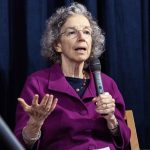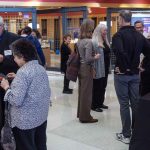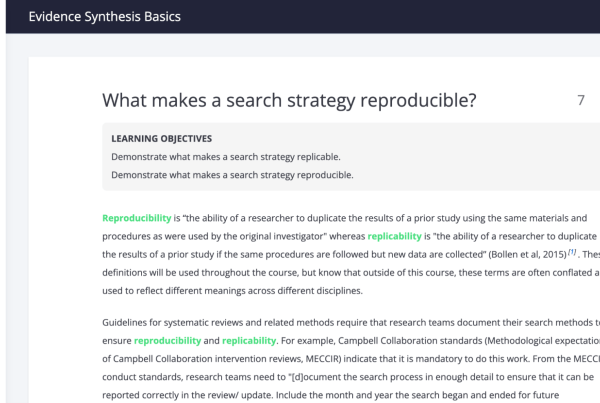By Adria Carpenter

Attendees browse the Symbolic Significance exhibit opening event on Monday, Sept. 11, 2023. (Photo/Adria Carpenter)
On Sept. 7, 2021, Jewish students at the University of Minnesota had to make a choice: do they attend the first day of classes, or do they respect Rosh Hashanah?
In Minnesota, the academic school year typically begins the day after Labor Day, and usually it goes off without a hitch.
But sometimes, this date conflicts with the Jewish High Holy Days, a 10-day period starting with the Jewish new year, Rosh Hashanah, and ending with the Day of Atonement, Yom Kippur.
While other K-12 school districts across the state changed their start date to avoid coinciding with Rosh Hashanah, the University of Minnesota did not. In fact, it was also the only Big Ten university to start the 2021 academic year on Rosh Hashanah.
This incident got Kate Dietrick’s attention. Dietrick, archivist for the Upper Midwest Jewish Archives, was granted a six-week research leave to uncover how often this occurs, and after looking through over 100 years of local Jewish history, she found that this conflict isn’t new.

Kate Dietrick, the archivist for the Upper Midwest Jewish Archives, talks with guests at the Symbolic Significance exhibit opening event on Monday, Sept. 11, 2023. (Photo/Adria Carpenter)
What came from that research is the exhibit Symbolic Significance: Tracing the History of Jewish High Holidays and the First Day of School, which shows how schools and colleges in Minnesota routinely ignored Jewish holidays.
“Is this the most important issue that faces the Jewish community? No, but it is telling as to how people understand, and respect, and treat the Jewish community,” Dietrick said. “If you don’t care about this, do you care about diversity, equity, and inclusion? Do you care about Jewish people?”
Football or Yom Kippur?
Watch the event video
Watch a video of the Sept. 11 panel discussion on YouTube.
Between 1923 and 2023, 33 percent of the University of Minnesota’s first day of classes, or freshman welcome week events, clashed with Jewish high holidays.
1955 is a notable year. The University Congress debated between two start dates: Sept. 26 and Oct. 3. The October date would’ve conflicted with the football schedule and ended the semester closer to Christmas, so they chose the September date.
It was never mentioned that Sept. 26 was Yom Kippur, the holiest day in the Jewish calendar.
“That one I feel like is the worst,” Dietrick said. “Not even on Christmas, not even on Christmas Eve, but just too close. In those kinds of records, you see whose religious holidays are respected and whose are just ignored.”

Attendees browse the Symbolic Significance exhibit opening event on Monday, Sept. 11, 2023. (Photo/Adria Carpenter)
Christianity permeated public schools until the 1960s, when the United States Supreme Court ruled against state-sponsored school prayers (Engel v. Vitale) and mandatory devotional Bible readings (Abington School District v. Schempp, Chamberlin v. Dade County Board).
The 1970s saw more awareness from educators and administrators about different minorities, ethnicities, and cultures, culminating in human relations training programs, Dietrick explained.
Checking your identity at the door
Another conflict arose during the 1981-82 school year when the U of M once again commenced the fall semester on Rosh Hashanah. The Jewish Community Relations Council petitioned University President C. Peter Magrath to delay the semester, sharing calendars of religious holidays, but the university didn’t budge.
Natan Paradise was a freshman at the University of Minnesota in 1981. He missed his first day of college, and seeing the exhibit unearthed all the emotions he experienced that day.
“That memory came crashing back on me. The confusion I had. And the anxiety just washed over me,” said Paradise at the exhibit’s opening on Monday, Sept. 11. “The fact that I forgot about it later, until I saw the graphic, is an indication of how normalized it is and has become.”

Natan Paradise, director of the Center for Jewish Studies, speaks at the Symbolic Significance exhibit opening event on Monday, Sept. 11, 2023. (Photo/Adria Carpenter)
Paradise, now the director of the Center for Jewish Studies at the U o M, is a fourth-generation Gopher. With so many family members studying and later working at the university, it kinda feels like the family business, he joked.
But despite that, Paradise has had to juggle academics and Jewish holidays throughout his time as a student and instructor. Planning his syllabi around the holidays, squeezing time to minimize class cancellations, and even using vacation hours for time off is typical.
“The university claims it’s committed to equity and inclusion. And if it is, then it ought to be,” he said. “If you are an inclusive and equitable campus, then nobody can be required to check their identity at the door.”
By November 1981, thanks in part to advocacy from local Jewish leaders, the university agreed to delay the 1982 fall semester that would’ve fallen on Yom Kippur. It also shifted the start dates for 1984 and 1987 to accommodate Rosh Hashanah, signally institutional respect for Jewish students, faculty, and staff.
“There is a symbolic significance to the first day of the school year and starting the academic year on an important Jewish holiday is not the right symbol,” said President Magrath in 1983.

Attendees browse the Symbolic Significance exhibit opening event on Monday, Sept. 11, 2023. (Photo/Adria Carpenter)
Back in the ’80s…
Dietrick found it “interesting” that the University of Minnesota delayed the academic year in the ‘80s but refused in 2021.
“Especially considering in that year and the years before, the University of Minnesota had really advocated for diversity, equity, and inclusion,” she said. “And here we are not understanding, making space, or respecting Jewish students, as well as staff and faculty.”
Changing the U of M calendar is a lengthy process. It’s initially drafted by the Registrar, then sent to the Senate Committee on Educational Policy, before final approval by the Faculty Senate. It’s usually completed “at least four years” in advance.
When Dietrick searched the committee meeting minutes four to six years in advance of the 2021 start, she found no discussion about conflicts with religious holidays.

Attendees browse the Symbolic Significance exhibit opening event on Monday, Sept. 11, 2023. (Photo/Adria Carpenter)
But the university had advance notice. Benjie Kaplan, the executive director of Minnesota Hillel, and other Jewish leaders, had contacted the Office of Equity and Diversity about the upcoming conflict with Rosh Hashanah in 2016 and offered to help find a solution.
The administration said they’d look into it. Three years later, they said they’d circle back when a new university president was selected. With just months before the 2021 fall semester, they said it’s a six-year process to change the academic calendar.
“There was frustration,” said Kaplan at the exhibit opening. “It would’ve been nice to know at that fifth year out that it took six years.”

Benjie Kaplan, executive director of Minnesota Hillel, speaks at the Symbolic Significance exhibit opening event on Monday, Sept. 11, 2023. (Photo/Adria Carpenter)
Following the 2021 academic year, Paradise was appointed to the Academic Calendar Task Force, where he has pushed for a more equitable calendar, one that respects not just Jewish students, faculty, and staff, but many other groups that don’t adhere to the Christian calendar.
“It was a little discouraging … to go through the exhibit, and see some of the same arguments I was having with the task force were made 20 years ago, and 40 years ago, and 60 years ago, and 80 years ago,” he said.
He acknowledges that the academic calendar is tight, but it’s also flexible if the University is willing. But there’s pushback against accommodating non-Christian religious holidays, usually citing inconvenience. Paradise’s response: “You can be inconvenienced once every 30 years.”
Learning about other faiths
As Dietrick researched this issue, she kept thinking of first year students, excited to be on campus and away from their parents, excited to finally become adults. And then the first day of class is on their religious holiday.
“How does that feel? I think that would be really hard as an 18 year old, to have to miss out on that day,” she said. “That’s a lot of responsibility to put on a student. I don’t think that the University should do that.”

Attendees browse the Symbolic Significance exhibit opening event on Monday, Sept. 11, 2023. (Photo/Adria Carpenter)
Dietrick thinks it’s fantastic that more and more K-12 schools have been giving Jewish and Muslim holidays off. She hopes people use that free time to learn about other faiths and their religious holidays.
“Use that as an opportunity to learn about people who are different from you,” she said.
About the exhibit
Symbolic Significance is on display on the third floor of the Elmer L. Andersen Library until Jan. 30, 2024, and it’s open during regular library hours (9 a.m. to 5 p.m. on Monday, Tuesday, and Friday; and 9 a.m. to 7 p.m. on Wednesday and Thursday).
- Guests gather, talk, and eat food at the Symbolic Significance exhibit opening event on Monday, Sept. 11, 2023. (Photo/Adria Carpenter)
- Natan Paradise, director of the Center for Jewish Studies; Riv-Ellen Prell, professor emerita of American Studies at UMN; and Steve Hunegs, executive director of the Jewish Community Relations Council of Minnesota and the Dakotas, have a round-table discussion at the Symbolic Significance exhibit opening event on Monday, Sept. 11, 2023. (Photo/Adria Carpenter)
- Steve Hunegs, executive director of the Jewish Community Relations Council of Minnesota and the Dakotas, speaks at the Symbolic Significance exhibit opening event on Monday, Sept. 11, 2023. (Photo/Adria Carpenter)
- Guests gather, talk, and eat food at the Symbolic Significance exhibit opening event on Monday, Sept. 11, 2023. (Photo/Adria Carpenter)
- Riv-Ellen Prell, professor emerita of American Studies at the University of Minnesota, speaks at the Symbolic Significance exhibit opening event on Monday, Sept. 11, 2023. (Photo/Adria Carpenter)
- Guests gather, talk, and eat food at the Symbolic Significance exhibit opening event on Monday, Sept. 11, 2023. (Photo/Adria Carpenter)
- Guests gather, talk, and eat food at the Symbolic Significance exhibit opening event on Monday, Sept. 11, 2023. (Photo/Adria Carpenter)
- Guests gather, talk, and eat food at the Symbolic Significance exhibit opening event on Monday, Sept. 11, 2023. (Photo/Adria Carpenter)
- Kris Kiesling, director of the Archives and Special Collections, speaks with guests at the Symbolic Significance exhibit opening event on Monday, Sept. 11, 2023. (Photo/Adria Carpenter)
- Guests gather, talk, and eat food at the Symbolic Significance exhibit opening event on Monday, Sept. 11, 2023. (Photo/Adria Carpenter)
- Attendees browse the Symbolic Significance exhibit opening event on Monday, Sept. 11, 2023. (Photo/Adria Carpenter)
- Guests gather, talk, and eat food at the Symbolic Significance exhibit opening event on Monday, Sept. 11, 2023. (Photo/Adria Carpenter)
















